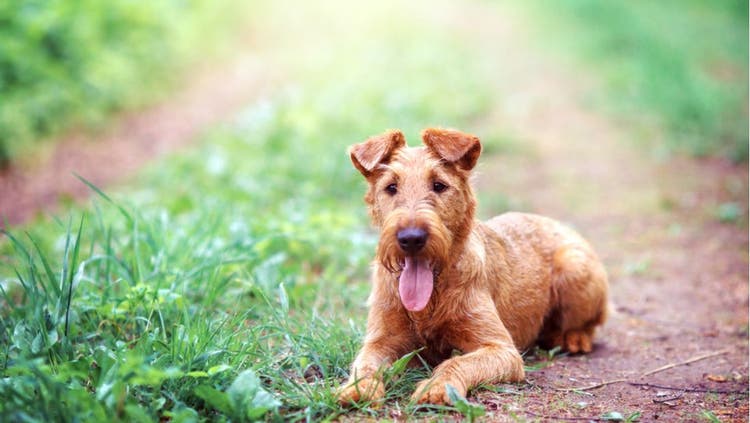
Choosing an Irish Terrier
The Irish terrier, also known as the Irish red terrier, is a courageous dog in the fields of hunting, tracking, police work and military work. This breed is also an excellent watchdog, show dog and a household companion.
History and Origin
The Irish terrier breed is about 2,000 years old and is considered one of the oldest of the terriers. Though the breed’s origin is debated, many feel that the dog was developed in southern Ireland from various terriers. The earliest documentation of the Irish terrier comes from paintings dating to the 1700s. In 1875, the Irish terrier was first shown in dog shows all over Ireland. By the 1880s, this dog was one of the top five popular breeds in England.
Cropping of ears was a common practice in England up until the late 1880s. In 1889, the Irish Terrier Club of England decided that future Irish terriers must not have their ears cropped. This began a debate that led to the banning of ear cropping in any breed exhibited in England.
In 1896, the Irish Terrier Club of America was formed. The feisty terrier was recognized by the American Kennel Club in the Terrier group.
Appearance and Size
The Irish terrier has a long flat head, small dark eyes and V-shaped ears that fall forward. The tail is docked and carried erect. With a medium-sized body, this terrier is a well-balanced, muscular dog. The face is framed with long whiskers, a bearded mustache and a black nose. The Irish terrier has a coarse, hard, wiry topcoat with a soft, fine undercoat. The hair coat comes in red, red-wheaten or yellow. The Irish terrier stands 18 to 19 inches from the shoulder and weighs 25 to 27 pounds.
Personality Traits
The Irish terrier is extremely intelligent with an even temperament, but has a fighting spirit, similar to many other members of the terrier group.
Home and Family Relations
The Irish terrier is affectionate, loyal and brave to their owners, but can be very intolerant of other dogs. They love to run and play with children and be around the family. They make excellent watchdogs.
Training
The Irish terrier is easily trained. He has a high-strung spirit, but still wants to please his owner. When in public, the Irish terrier must be leashed to prevent the dog from following through on his seemingly uncontrollable urge to scrap with other dogs. This potential behavior needs to be worked on in basic and advanced obedience classes.
Grooming
The Irish terrier needs only daily brushing of the coat to keep it clean.
Special Care
The Irish terrier is full of energy and needs lots of exercise to keep him manageable. Due to their dislike of other dogs, consistent training and constant monitoring when in public is necessary.
Common Diseases and Disorders
Irish terriers are generally healthy with few medical problems. In addition to cystine bladder stones, this breed is also prone to some behavior problems such as digging.
Although these occur infrequently, the following disorders have also been reported:
- Melanoma is a tumor arising from melanocytes, which are the cells that produce pigment.
- Cataracts cause the lens of the eye to loose transparency and can result in blindness.
- Retinal dysplasia – is a congenital disease of the retina of the eye which can lead to blindness.\
Life Span
- The life expectancy of the Irish terrier is 12 to 15 years.
- We realize that each dog is unique and may display other characteristics. This profile provides generally accepted breed information only.